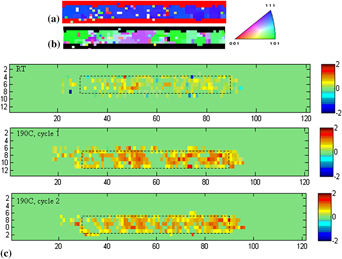Article contents
Thermal strains in passivated aluminum and copper conductor lines
Published online by Cambridge University Press: 09 March 2011
Abstract

Line width and line thickness thermal strain components in passivated Al and Cu lines were observed to relax much more than the line length strain component. Although the width-to-thickness ratios were large, 3.5 and 4.4 for Al and Cu lines, respectively, the behaviors of the thermal stresses were far from the equibiaxial. Observed changes in deviatoric strains between room temperature and 190 °C for Al and 300 °C for Cu were consistent with a model in which the changes in line width and line thickness strains were simply related to changes in line length strains by the uniaxial Poisson’s ratio. Changes in line length strains were determined by the differences in metal and substrate thermal expansion coefficients and the magnitudes of temperature changes through retained elastic strain coefficients for Al of 30% for heating and for Cu of 60% for heating and 80% for cooling, with the balance accommodated by relaxation.
- Type
- Articles
- Information
- Copyright
- Copyright © Materials Research Society 2011
References
REFERENCES
- 5
- Cited by




